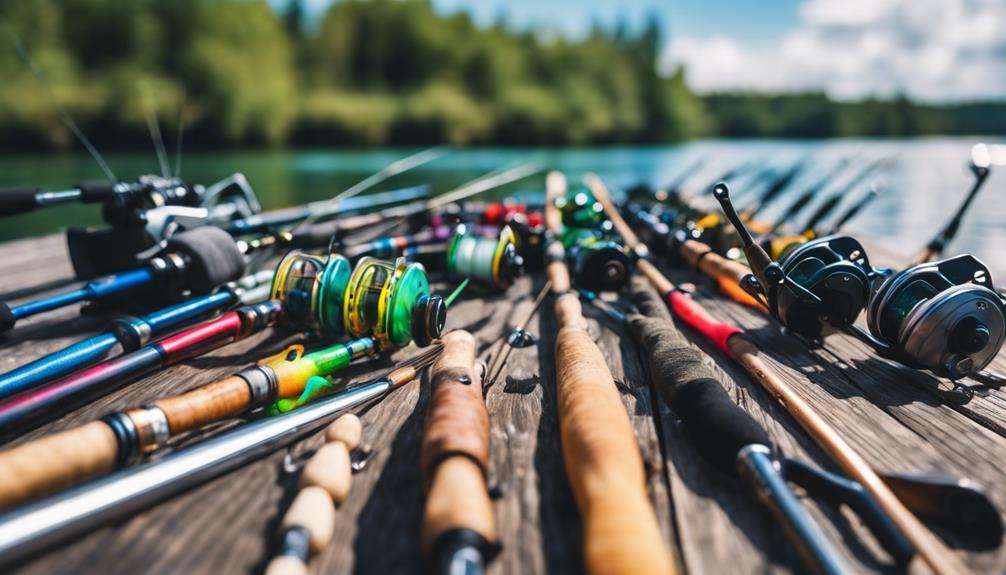Fishing is more than just a pastime; it’s a way of life for many enthusiasts. Whether you’re a seasoned angler or a novice looking to dip your toes in the water, knowing when fishing season begins and ends is crucial for a successful outing. In this blog post, we will explore the best times to fish, the factors that influence fishing seasons, and tips for making the most of your fishing experience.
Understanding Fishing Seasons: What You Need to Know
When it comes to fishing, the term “fishing season” typically refers to the times of the year when specific fish species are most active and plentiful. This can vary significantly based on geographical location, climate, and the type of fish you are targeting. For instance, freshwater fishing seasons often differ from saltwater fishing seasons, and various states may have their own regulations regarding fishing times. Understanding these nuances is essential for any angler looking to optimize their fishing trips.
Factors Affecting When Fishing Season Begins
Several environmental factors dictate when fishing season starts in any given area. Water temperature is one of the most significant influences, as many fish species are cold-blooded and rely on external temperatures to determine their activity levels. Generally, as water warms up in spring, fish become more active, signaling the onset of fishing season. Additionally, spawning cycles, which vary between species, can also affect fishing availability. For example, bass often spawn in the spring, making this period an excellent time for anglers targeting them.
Regional Differences in Fishing Seasons
In the United States, fishing seasons can vary widely from one region to another. For instance, northern states like Minnesota may have a shorter fishing season due to colder climates, while southern states like Florida can boast nearly year-round fishing opportunities. In the northeast, trout fishing typically opens in the spring, while in the west, salmon fishing seasons are often set by the state’s wildlife agency based on population assessments. It’s crucial for anglers to familiarize themselves with local regulations and seasonal variations to make the most of their fishing endeavors.
Popular Fish Species and Their Fishing Seasons
Different species of fish have distinct seasons when they are most active and abundant. Here are some popular fish species along with their typical fishing seasons:
– Bass: In many regions, bass fishing season kicks off in late spring and can last through the summer. This is when they are spawning and actively feeding.
– Trout: Trout fishing often opens in the spring, with the best times being from April to June in many areas. Fall can also be a productive time for trout fishing as they prepare for winter.
– Salmon: Salmon fishing seasons vary by species and region, but typically run from late spring to early fall, depending on the migratory patterns of the fish.
– Catfish: Catfish can be fished year-round, but the warmer months from late spring through summer are often the most productive.
Being aware of these seasonal trends can greatly enhance your fishing success.
Fishing Regulations and Their Impact on Fishing Seasons
Fishing regulations are established by state and federal wildlife agencies to ensure sustainable fishing practices. These regulations often include specific fishing seasons, size limits, and bag limits for various species. For instance, many states impose a closed season for certain fish species to protect them during their spawning period. As an angler, it is crucial to stay informed about these regulations to ensure compliance and contribute to the conservation of fish populations.
Preparing for Fishing Season: Essential Gear and Tips
As fishing season approaches, it’s important to prepare your gear and plan your trips. Here are some essential tips for getting ready:
1. Check Your Equipment: Before heading out, make sure your fishing rod, reel, and tackle are in good condition. Replace any worn lines or lures.
2. Research Locations: Look for local fishing spots that are known for good catches during the season. Online forums and local fishing reports can provide valuable insights.
3. Plan Your Trips: Consider factors such as weather conditions and moon phases, which can impact fish activity. Early mornings and late evenings are often the best times to fish.
4. Practice Conservation: Always follow best practices for catch and release, and adhere to local regulations to protect fish populations for future generations.
The Joy of Fishing Season: Building Memories
Fishing season is not just about the catch; it’s also about the experience. Whether you’re fishing with family, friends, or solo, each trip provides an opportunity to connect with nature and create lasting memories. The thrill of casting your line, the anticipation of a bite, and the joy of reeling in a fish are all part of what makes fishing so special. It’s also a great way to unwind, escape the hustle and bustle of daily life, and enjoy the great outdoors.
Conclusion: Embrace the Fishing Season
Understanding when fishing season is, and the various factors that influence it, is essential for any angler looking to maximize their fishing experience. By being aware of regional differences, popular species, regulations, and preparation tips, you can ensure a successful and enjoyable fishing season. So grab your gear, plan your trips, and immerse yourself in the joy of fishing. After all, every season has its own unique charm, and the experiences you build along the way will be cherished for years to come.
—
With this comprehensive guide, you’ll be well-equipped to tackle fishing season head-on. Remember, the best time to fish is not just about the catch; it’s about the experience! Happy fishing!
